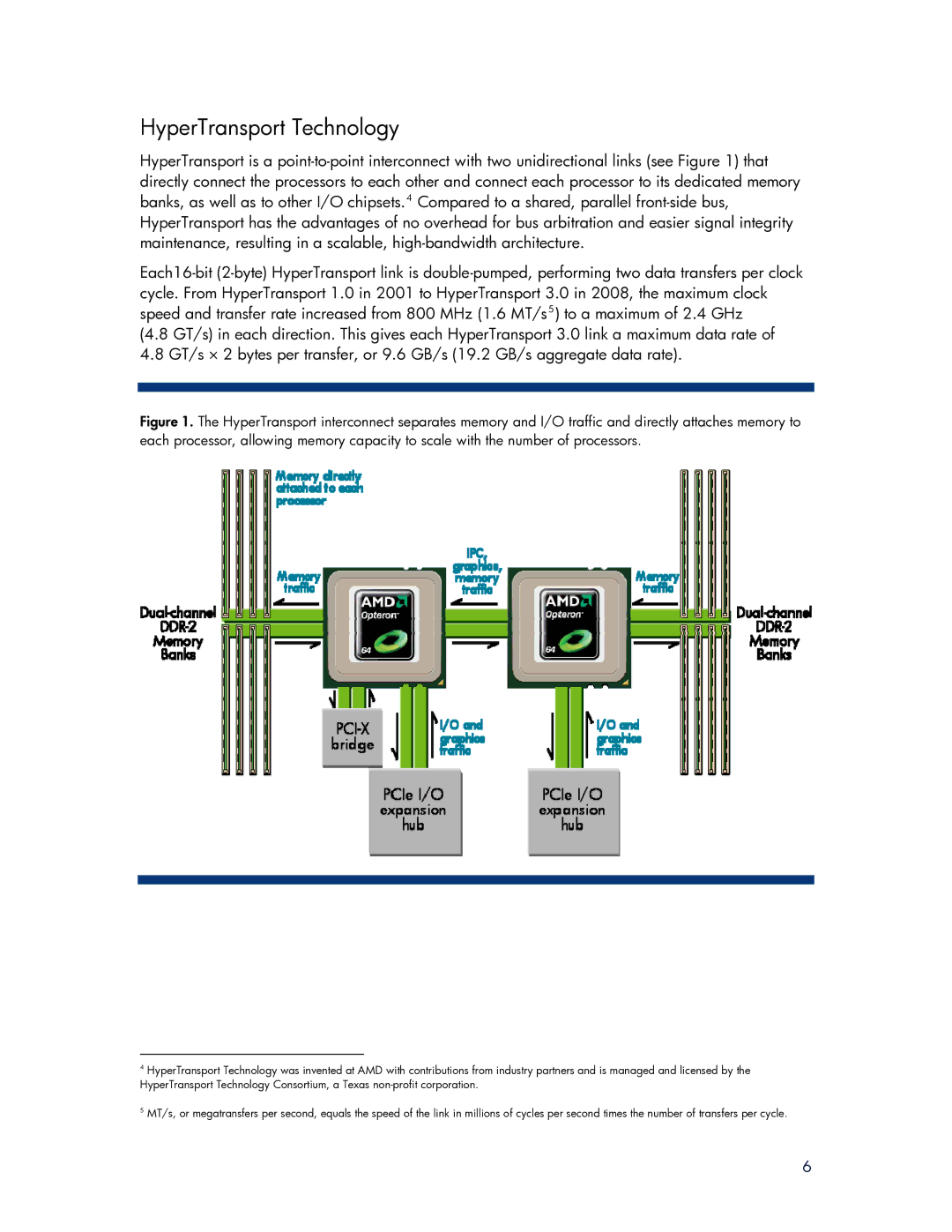
HyperTransport Technology
HyperTransport is a
(4.8 GT/s) in each direction. This gives each HyperTransport 3.0 link a maximum data rate of 4.8 GT/s × 2 bytes per transfer, or 9.6 GB/s (19.2 GB/s aggregate data rate).
Figure 1. The HyperTransport interconnect separates memory and I/O traffic and directly attaches memory to each processor, allowing memory capacity to scale with the number of processors.
4HyperTransport Technology was invented at AMD with contributions from industry partners and is managed and licensed by the HyperTransport Technology Consortium, a Texas
5MT/s, or megatransfers per second, equals the speed of the link in millions of cycles per second times the number of transfers per cycle.
6
